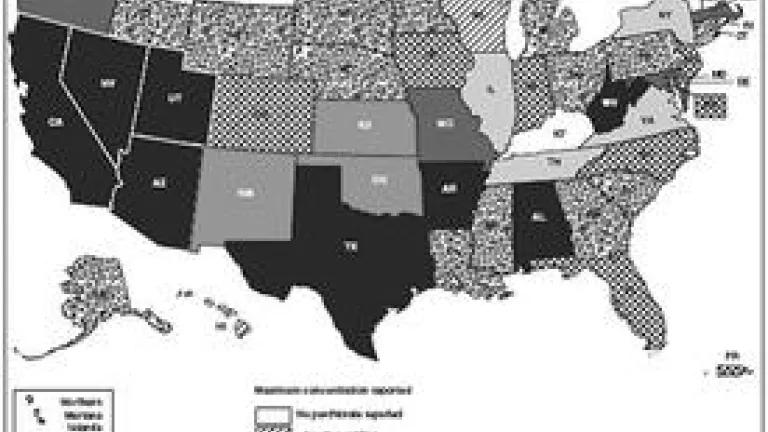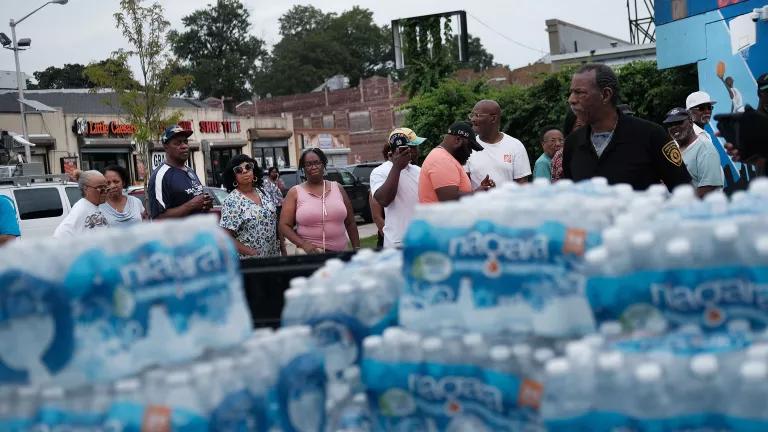
Huge news coming out of EPA’s Office of Water today. After a decade of pushing by NRDC, EPA announced that it has decided to regulate perchlorate in drinking water. While this might not sound like much, it took a lot to get EPA to this point.
The Agency is taking a very important first step to lowering the amount of perchlorate that can be in tap water. The Agency did not set an actual limit on perchlorate in drinking water. That is still to come and will still require more work on our part to make sure the Agency sets a number that protects public health. But today’s announcement marks a big shift for the Agency.
EPA's decision to regulate perchlorate will not only protect our health but reverses bad public policy that has put us at risk for years.
Perchlorate is a component of rocket fuel, and it has been used by defense contractors for decades. It has been contaminating the water in the Colorado River and other water bodies since the 50s and continues to find its way into our drinking water around the country. Those mostly responsible for all the perchlorate in our water, including the Department of Defense, have – until today – successfully stopped our government from doing anything about the contamination. The Bush Administration even tried to foreclose all chances of regulating perchlorate in drinking water. Thankfully, under the Obama Administration, the Agency is taking its job of environmental and public health protection seriously.
Under the federal Safe Drinking Water Act, when EPA finds that a contaminant meets three criteria, it must begin the process of limiting its presence in drinking water. Today, EPA found that perchlorate meets all three criteria.
1) Perchlorate may have an adverse effect on the people’s health,
2) Perchlorate is known to occur or there is a substantial likelihood that the contaminant will occur in public water systems with a frequency and at levels of public health concern, and
3) Regulating perchlorate presents a meaningful opportunity for health risk reduction for those served by public water systems.
Here at NRDC, we have been telling the Agency for at least a decade that perchlorate contamination of drinking water is a huge problem and needs to be dealt with by the Agency. My colleague Gina Solomon has also testified twice before the U.S. Congress about the need to regulate perchlorate. Gina, along with our colleague Jen Sass, have done a fantastic job describing the adverse health effects associated with exposure to perchlorate. And EPA’s decision reflects its agreement with this science.
Secondly, perchlorate contamination is found in almost every state. EPA sampled the water in just 3,865 public water systems and found that 4% of them – which serve 17.6 million people – contained perchlorate at or above 4 parts per billion (the lowest level that was looked for) or higher. Extrapolated to the whole nation, this means that tens of millions of people are drinking perchlorate-contaminated water. A 2010 report by the investigative arm of the Congress, the GAO, found perchlorate in water and other media in 45 states. Below is a map from that GAO report showing the levels of perchlorate found across the country. (Click on the map for a larger image.)
Even more concerning, the Food and Drug Administration found perchlorate in more than half of the foods that they tested. And perchlorate is found in human breast milk. Perchlorate-contaminated food and water may likely contribute to breast milk contamination. That means the very populations that need protection from exposure to this chemical could be getting a shot of perchlorate every time we feed them.
Finally, Administrator Lisa Jackson, head of the EPA, has determined that limiting the amount of perchlorate allowed in drinking water presents a “meaningful opportunity” to reduce the risk to public health. Given the science on the impact of perchlorate on normal thyroid function and the data on the widespread occurrence of perchlorate throughout the U.S., this determination marks the Agency finally coming to its senses.



